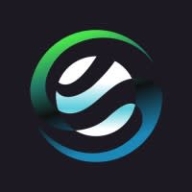

Deep Instinct Prevention Platform and Morphisec are advanced cybersecurity solutions. Based on user feedback, Morphisec has the upper hand with superior features, making it worth the price.
Features: Deep Instinct Prevention Platform has robust threat detection, deep learning for proactive protection, and strong pricing and support. Morphisec is lightweight, offers effective memory protection, and has refined, user-friendly features.
Room for Improvement: Deep Instinct Prevention Platform needs better integration with other security tools, improved reporting capabilities, and more deployment flexibility. Morphisec users suggest better detection response rates, expanded threat intelligence features, and enhanced scalability.
Ease of Deployment and Customer Service: Deep Instinct Prevention Platform offers straightforward deployment but sometimes slow customer service. Morphisec provides quick, flexible deployment and reliable customer service.
Pricing and ROI: Deep Instinct Prevention Platform is cost-effective with good ROI. Morphisec, although pricier, provides excellent ROI through its advanced features and comprehensive protection capabilities.
| Product | Market Share (%) |
|---|---|
| Deep Instinct Prevention Platform | 0.8% |
| Morphisec | 0.6% |
| Other | 98.6% |


| Company Size | Count |
|---|---|
| Small Business | 11 |
| Midsize Enterprise | 4 |
| Large Enterprise | 5 |
| Company Size | Count |
|---|---|
| Small Business | 5 |
| Midsize Enterprise | 8 |
| Large Enterprise | 8 |
Deep Instinct PREVENTS >99% of UNKNOWN threats like ransomware and zero-days before they land inside your environment – not after. With both an agentless and agent-based approach, we ensure file-based and fileless attacks are prevented. To achieve this, Deep Instinct is pioneering the use of deep learning AI to prevent threats in <20ms, without requiring calls to the cloud for threat intelligence. Our ability to scale to the needs of the enterprise is unprecedented as is our delivery of the industry’s lowest false positive rate of <0.1%.
The Deep Instinct Prevention Platform combines industry-leading static analysis based on the only deep learning framework dedicated to cybersecurity and includes two solutions:
To learn more, visit: https://www.deepinstinct.com.
Morphisec integrates seamlessly with platforms like Microsoft Defender, offering signatureless protection against zero-day threats and ransomware. It enhances existing endpoint solutions with minimal maintenance through its set-and-forget deployment, providing heightened security and reduced false positives.
Morphisec strengthens defense strategies by merging memory morphing and signatureless protection to effectively block zero-day attacks and ransomware. It operates efficiently within existing infrastructure, reducing system impact and maintenance needs. Users find its full visibility dashboard invaluable. Despite its strengths, cloud deployment and reporting features can be improved. Stability, alerts, and integration with other systems pose challenges for users, impacting usability and support quality.
What are Morphisec's key features?
What benefits should users consider in reviews?
In security-focused industries, Morphisec is crucial for protecting workstations and servers against sophisticated attacks like ransomware. Its signatureless technology offers early threat detection, while compatibility with existing systems ensures seamless integration, providing advanced protection without additional licensing costs.
We monitor all Endpoint Protection Platform (EPP) reviews to prevent fraudulent reviews and keep review quality high. We do not post reviews by company employees or direct competitors. We validate each review for authenticity via cross-reference with LinkedIn, and personal follow-up with the reviewer when necessary.